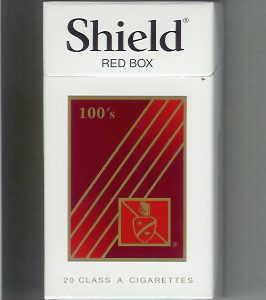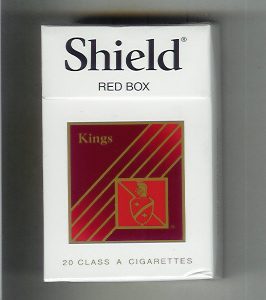Unraveling the Enigma: Cartons of Cigarettes and their Pack

Carton of cigarettes how many packs
CountsIn the realm of cigarette consumption, the humble carton emerges as a ubiquitous presence, shrouded in curiosity and intrigue. As smokers navigate the ever-changing landscape of tobacco products, one question lingers: how many packs reside within the confines of a single carton? This query, while seemingly straightforward, unveils a tapestry of regional variations, economic influences, and regulatory frameworks that shape the very essence of cigarette packaging.
Uncovering the Global Tapestry
The world of cigarette packaging is a kaleidoscope of diversity, with each nation weaving its unique narrative into the fabric of tobacco consumption. In the United States, the classic “twenty pack” reigns supreme, a familiar sight gracing the shelves of convenience stores and gas stations alike. However, this uniformity is merely a mirage, as a journey across borders unveils a captivating array of pack sizes and carton configurations.
The Land Down Under: Australia’s Unconventional Approach
Across the Pacific, Australian smokers partake in a different ritual. Their packs often boast a heftier count of 26 cigarettes, granting them a little extra indulgence with each purchase. This deviation from the norm extends beyond the Land Down Under, with various countries embracing the “around 30” club, offering cartons tailored to accommodate these larger pack sizes.
Tailored Experiences: Personalized Packs and Cartons
Yet, the tapestry of cigarette packaging extends far beyond the realm of standardized offerings. For those seeking a touch of individuality, personalized boxes and cartons emerge as a canvas for self-expression. These bespoke creations allow smokers to curate their experience, housing their chosen number of cigarettes within a package that reflects their unique style and preferences.
The Regulatory Tapestry: Governments Weave the Pattern
Like the intricate threads of a tapestry, governments across the globe have woven their own patterns into the fabric of cigarette packaging. Akin to bouncers at a smoky club, these regulatory bodies set the boundaries, dictating the minimum and maximum pack sizes permissible within their jurisdictions.
In the United States, the magic number of 20 cigarettes per pack stands as the immutable minimum, a standard that has endured the test of time. Conversely, other nations have stretched these limits, with Australia allowing cartons to house up to 50 cigarettes, a testament to the diversity of consumer preferences and regulatory landscapes.
The Economics of Pack Sizes: A Delicate Dance
Amidst this intricate tapestry, the interplay between pack sizes and pricing emerges as a captivating dance. Cheaper packs often adhere to the 20-cigarette script, catering to budget-conscious smokers seeking a more economical indulgence. Conversely, pricier offerings frequently flaunt larger counts, appealing to those seeking a more substantial investment in their smoking experience.
This delicate dance between cost and quantity is not merely a fleeting trend; it is a strategic maneuver employed by tobacco companies to maintain their products’ allure in the face of escalating taxes and shifting consumer habits.
The Shifting Sands: Evolution in Cigarette Packaging
Just as the tides of time ebb and flow, the landscape of cigarette packaging is ever-evolving. The mix of pack sizes undergoes a slow waltz, with cheaper offerings gravitating towards the 20-stick standard, while their pricier counterparts inch towards larger offerings. This dance is choreographed by a myriad of factors, including costs, consumer habits, and perhaps even a touch of marketing magic.
The Emergence of Eco-Conscious Packaging
As the world awakens to the urgency of environmental stewardship, the cigarette industry finds itself at a crossroads. Traditional cardboard cartons are gradually giving way to more eco-friendly materials, while child-resistant features are becoming increasingly prevalent. The future of cigarette packaging may lie in the development of innovative designs that strike a harmonious balance between functionality and responsibility.
One can envision a world where cartons biodegrade after use, or dispense cigarettes one at a time, promoting moderation and mitigating the environmental impact of tobacco consumption.
The Carton’s Saga: From Fortress to Canvas
The narrative of the cigarette carton extends far beyond its utilitarian purpose of housing cigarette packs. In its essence, the carton transcends its functional role, transforming into a canvas upon which brands etch their identities, a silent salesperson vying for attention amidst the cluttered shelves of retail establishments.
Sleek, minimalist designs exude an air of refinement, while bold, vibrant visuals beckon with promises of flavor and excitement. Some cartons boast embossed textures, inviting tactile exploration and adding an extra dimension to the smoking ritual.
Within this domain, the carton evolves from a mere container into an object of desire, a symbol of resistance, or a badge of belonging, forging an indelible connection between smoker and brand.
The Master Carton: A Towering Empire of Smoke
For the average smoker, a carton of cigarettes is a familiar sight, a convenient means of stocking up on their preferred indulgence. However, step into the inner sanctum of the tobacco industry, and you’ll encounter a giant known as the master carton – a carton not of cigarettes, but of cartons themselves.
Imagine a towering cardboard fortress, holding anywhere from 10 to 20 standard cartons, each brimming with the promise of smoke. This staggering quantity, a testament to the enduring grip of the tobacco industry on some consumers, is akin to a personal cigarette empire, neatly stacked within a single box.
While these master cartons may not grace the shelves of your local convenience store, they play a crucial role in the supply chain, streamlining distribution for bulk orders and enabling wholesalers and manufacturers to move vast quantities of cigarettes with efficiency.
Yet, the sheer size of a master carton speaks volumes about the potential consumption levels it represents, a silent monument to the hold tobacco can have on individuals and communities.
The Carton’s Metamorphosis: From Utility to Art
As the world evolves, so too does the humble cigarette carton. No longer a mere vessel for housing cigarettes, it has metamorphosed into a canvas for artistic expression, a medium through which brands can captivate and entice.
Sleek, minimalist designs exude an air of sophistication, while bold, vibrant visuals beckon with promises of flavor and excitement. Some cartons boast embossed textures, inviting tactile exploration and adding an extra dimension to the smoking ritual.
Within this realm, the carton transcends its utilitarian purpose, transforming into an object of desire, a symbol of resistance, or a badge of belonging, forging an indelible connection between smoker and brand.
The Carton’s Tapestry: Weaving Narratives of Moderation
As the cigarette industry navigates the shifting tides of public perception and regulatory landscapes, the humble carton emerges as a canvas upon which narratives of moderation and responsibility can be woven.
Envision cartons that dispense cigarettes one at a time, encouraging mindful consumption and promoting a more deliberate approach to indulgence. Or perhaps biodegradable cartons that decompose after use, minimizing the environmental impact of tobacco consumption.
These innovative designs have the potential to transform the carton from a mere vessel into a powerful tool for shaping consumer behavior, nudging smokers towards more conscious choices and fostering a culture of moderation.
The Carton’s Metamorphosis: From Utility to Art
As the world evolves, so too does the humble cigarette carton. No longer a mere vessel for housing cigarettes, it has metamorphosed into a canvas for artistic expression, a medium through which brands can captivate and entice.
Sleek, minimalist designs exude an air of sophistication, while bold, vibrant visuals beckon with promises of flavor and excitement. Some cartons boast embossed textures, inviting tactile exploration and adding an extra dimension to the smoking ritual.
Within this realm, the carton transcends its utilitarian purpose, transforming into an object of desire, a symbol of resistance, or a badge of belonging, forging an indelible connection between smoker and brand.
The Carton’s Tapestry: Weaving Narratives of Moderation
As the cigarette industry navigates the shifting tides of public perception and regulatory landscapes, the humble carton emerges as a canvas upon which narratives of moderation and responsibility can be woven.
Envision cartons that dispense cigarettes one at a time, encouraging mindful consumption and promoting a more deliberate approach to indulgence. Or perhaps biodegradable cartons that decompose after use, minimizing the environmental impact of tobacco consumption.
These innovative designs have the potential to transform the carton from a mere vessel into a powerful tool for shaping consumer behavior, nudging smokers towards more conscious choices and fostering a culture of moderation.
The Carton’s Tapestry: Weaving Narratives of Moderation
As the cigarette industry navigates the shifting tides of public perception and regulatory landscapes, the humble carton emerges as a canvas upon which narratives of moderation and responsibility can be woven.
Envision cartons that dispense cigarettes one at a time, encouraging mindful consumption and promoting a more deliberate approach to indulgence. Or perhaps biodegradable cartons that decompose after use, minimizing the environmental impact of tobacco consumption.
These innovative designs have the potential to transform the carton from a mere vessel into a powerful tool for shaping consumer behavior, nudging smokers towards more conscious choices and fostering a culture of moderation.
The Carton’s Tapestry: Weaving Narratives of Moderation
As the cigarette industry navigates the shifting tides of public perception and regulatory landscapes, the humble carton emerges as a canvas upon which narratives of moderation and responsibility can be woven.
Envision cartons that dispense cigarettes one at a time, encouraging mindful consumption and promoting a more deliberate approach to indulgence. Or perhaps biodegradable cartons that decompose after use, minimizing the environmental impact of tobacco consumption.
These innovative designs have the potential to transform the carton from a mere vessel into a powerful tool for shaping consumer behavior, nudging smokers towards more conscious choices and fostering a culture of moderation.
Conclusion: The Carton’s Odyssey Continues
As we bid farewell to this odyssey through the realm of cigarette cartons, one truth emerges: the journey is far from over. The tapestry of cigarette packaging continues to evolve, weaving together threads of consumer preferences, regulatory frameworks, and industry innovations.
Whether you find yourself reaching for a sleek, minimalist carton or a vibrant, embossed masterpiece, remember that within its cardboard walls lies more than just a collection of cigarettes. It is a reflection of societal trends, economic forces, and cultural narratives, all intricately woven into a single, compact vessel.
So, the next time you hold a carton in your hands, pause and appreciate the intricate tapestry it represents – a tapestry that continues to be woven, one thread at a time, by the ever-changing landscape of the tobacco industry.

 Shield Red 100's Box of 10 packs
Shield Red 100's Box of 10 packs  Shield Red Kings Box of 10 packs
Shield Red Kings Box of 10 packs